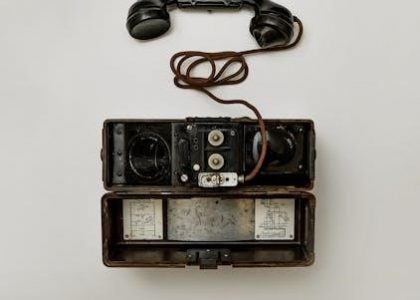Cranial nerves are 12 pairs of nerves originating from the brain, controlling sensory and motor functions like vision, hearing, taste, smell, and muscle movements. They are essential for transmitting sensory information and enabling motor responses, playing a critical role in diagnosing neurological conditions and assessing brain function. Understanding their structure and function is vital for accurate testing and interpretation of results in clinical settings.
1.1 Overview of the 12 Cranial Nerves
The 12 cranial nerves originate from the brain and regulate vital functions, including sensory perception (e.g., smell, vision, hearing) and motor responses (e.g., eye movement, facial expressions). They are categorized as sensory, motor, or mixed. CN I (olfactory) manages smell, CN II (optic) handles vision, and CN VIII (vestibulocochlear) controls hearing and balance. Motor nerves like CN III, IV, and VI govern eye movements, while CN VII (facial) and CN XII (hypoglossal) control facial expressions and tongue movements, respectively. Their proper functioning is crucial for overall neurological health and diagnostic accuracy.
1.2 Importance of Cranial Nerve Testing
Cranial nerve testing is essential for identifying neurological deficits and diagnosing conditions like brain injuries, strokes, or tumors. It provides insights into sensory and motor functions, aiding in early detection of abnormalities. Regular assessments help monitor treatment progress and ensure accurate patient care. By evaluating responses such as eye movements, taste, and hearing, healthcare professionals can pinpoint specific nerve dysfunctions, guiding targeted therapies and improving patient outcomes. This systematic approach ensures comprehensive neurological evaluations, enhancing diagnostic precision and treatment effectiveness.
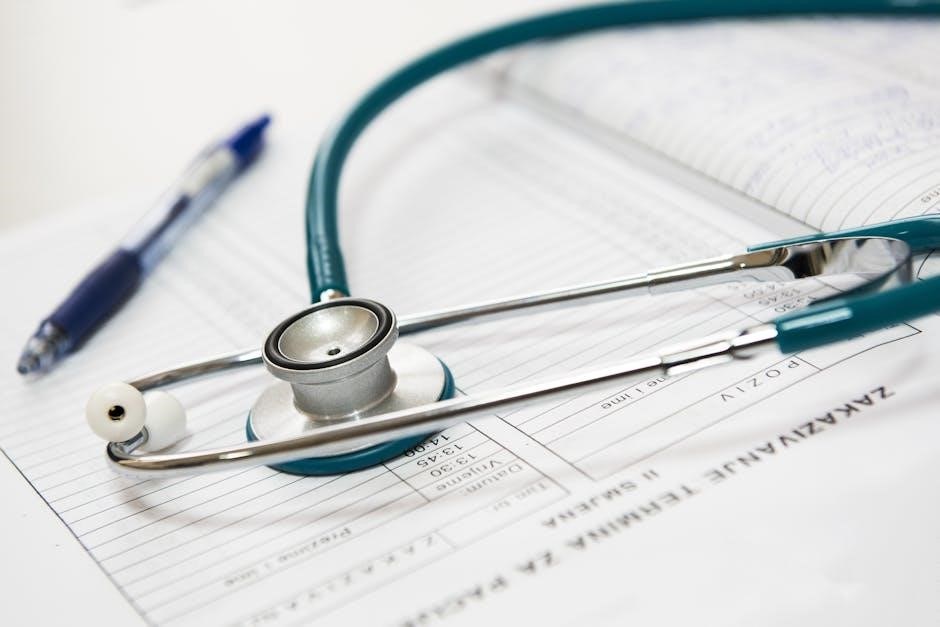
Equipment and Preparation for Cranial Nerve Testing
Essential tools include a Snellen chart, penlight, cotton balls, tuning fork, and tongue depressor. Ensure proper patient positioning and a quiet environment for accurate sensory and motor assessments.
2.1 Essential Tools for the Examination
The examination requires specific tools to assess cranial nerve functions effectively. A Snellen chart or handheld eye chart evaluates visual acuity (CN II). A penlight is used for pupillary light reflex (CN II, III). Cotton balls or swabs test light touch sensation (CN V), while a tuning fork aids in hearing assessments (CN VIII). A tongue depressor is necessary for gag reflex (CN IX, X) and uvula inspection. Additional tools include olfactory kits for smell testing (CN I) and gloves for palpation. These tools ensure comprehensive and accurate evaluation of cranial nerve function.
2.2 Patient Preparation and Positioning
Patient preparation is crucial for accurate cranial nerve testing. Ensure the patient is seated comfortably with adequate lighting. For visual tests, allow the use of corrective lenses. Position the patient upright during swallowing assessments (CN IX, X) and gag reflex testing. During olfactory testing (CN I), ensure the patient’s eyes are closed to prevent visual cues. For hearing tests (CN VIII), minimize background noise. Proper positioning and a relaxed state enhance the reliability of test results, ensuring accurate neurological assessment and diagnosis. Clear instructions and patient cooperation are essential for successful examination.

Sensory Cranial Nerve Tests
Sensory cranial nerve tests assess functions like smell, vision, hearing, taste, and balance. These tests include olfactory nerve testing with odor identification, visual acuity exams, and hearing assessments using whispered voice, Weber, and Rinne tests. Additional evaluations may involve taste perception and vestibular function to ensure comprehensive sensory evaluation. These tests help identify deficits and diagnose conditions affecting sensory pathways, providing critical insights into neurological health and function.
3.1 Olfactory Nerve (CN I) ⎻ Smell Testing
Olfactory nerve testing evaluates the sense of smell, mediated by CN I. The patient is asked to identify different odors, such as coffee or vanilla, with each nostril tested separately while the eyes are closed. This assesses the ability to detect and distinguish smells. Normal response includes correct identification of odors, while inability to detect or differentiate may indicate olfactory dysfunction. This test is crucial for diagnosing conditions affecting the olfactory pathway, such as anosmia or olfactory nerve damage, providing insights into sensory deficits and neurological health.
3.2 Optic Nerve (CN II) ⸺ Visual Acuity and Field Tests
Testing the optic nerve involves assessing visual acuity and field. Visual acuity is measured using a Snellen chart or handheld card, with the patient reading letters at 14 inches or 36 cm. Each eye is tested separately, and the patient may wear corrective lenses. Visual field tests detect peripheral vision issues, such as blind spots. Pupillary light reflex and accommodation tests are also performed to evaluate CN II function. Abnormal results may indicate conditions like optic neuritis or glaucoma, emphasizing the importance of thorough assessment for accurate diagnosis and treatment planning.
3.3 Vestibulocochlear Nerve (CN VIII) ⸺ Hearing and Balance Tests
The vestibulocochlear nerve (CN VIII) is responsible for hearing and balance. Hearing assessment includes whispered voice tests, Weber, and Rinne tests. The whispered voice test evaluates hearing at 15 cm. Weber’s test involves placing a vibrating tuning fork on the forehead to assess sound lateralization. Rinne’s test compares bone conduction to air conduction. Balance is tested through vestibular-ocular reflex and coordination assessments. These tests help identify issues like sensorineural hearing loss or vestibular dysfunction, providing critical insights into CN VIII function and overall neurological health.
3.4 Glossopharyngeal Nerve (CN IX) ⸺ Taste Testing
The glossopharyngeal nerve (CN IX) manages taste sensation for the posterior tongue. Testing involves placing sweet, sour, salty, and bitter substances on the tongue’s back. The patient identifies each taste with eyes closed; This nerve also aids in swallowing and gag reflex. Proper function ensures accurate taste perception and swallowing ability, crucial for diagnosing conditions affecting CN IX and assessing neurological health. Abnormal results may indicate nerve damage or impaired taste function, requiring further evaluation for appropriate treatment and management.

Motor Cranial Nerve Tests
Motor cranial nerve tests assess the function of nerves controlling voluntary muscle movements, such as eye movements, facial expressions, and swallowing. These tests evaluate muscle strength, coordination, and reflexes to identify nerve-related impairments and diagnose conditions like facial palsy or dysphagia. Accurate assessment ensures proper neurological evaluation and guides targeted treatment plans for motor dysfunction.
4.1 Oculomotor (CN III), Trochlear (CN IV), and Abducens (CN VI) ⎻ Eye Movement Tests
These tests evaluate the function of cranial nerves III, IV, and VI, which control eye movements. The oculomotor nerve (CN III) manages eye elevation, pupil constriction, and eyelid opening. The trochlear nerve (CN IV) controls the superior oblique muscle, enabling downward eye movement. The abducens nerve (CN VI) governs lateral rectus muscle function, responsible for outward eye movement. Testing involves assessing extraocular movements, pupillary light reflex, and corneal reflex. Abnormalities may indicate nerve damage or conditions like strabismus or diplopia.
- Assess eye alignment and movement in six cardinal directions.
- Check pupillary reactions to light and accommodation.
- Evaluate for nystagmus or double vision.
4.2 Trigeminal Nerve (CN V) ⎻ Facial Sensation and Motor Function Tests
The trigeminal nerve (CN V) controls facial sensation and motor functions; It has three divisions: ophthalmic, maxillary, and mandibular. Sensory testing involves assessing touch, pain, and temperature on the face. Motor function is evaluated by observing jaw movements and masseter muscle contraction during chewing. Abnormalities may indicate conditions like trigeminal neuralgia. Tests include light touch with a cotton swab, pain assessment with a sharp object, and evaluation of the jaw jerk reflex for nerve integrity.
- Check facial sensation for symmetry and sensitivity.
- Assess chewing ability and muscle strength.
4.3 Facial Nerve (CN VII) ⸺ Facial Expression and Taste Tests
The facial nerve (CN VII) governs facial expressions and taste sensation. It exits the stylomastoid foramen and controls muscles of facial expression, taste for the anterior tongue, and the stapedius reflex. Testing involves evaluating facial symmetry and strength by asking the patient to perform movements like smiling, frowning, and closing eyes tightly. Taste testing is done by applying sweet, sour, salty, and bitter substances to the anterior tongue and assessing identification. Abnormal results may indicate facial nerve palsy or damage.
- Assess facial muscle strength and symmetry.
- Evaluate taste perception on the anterior tongue.
4.4 Vagus Nerve (CN X) ⎻ Swallowing and Gag Reflex Tests
The vagus nerve (CN X) controls swallowing, speech, and the gag reflex. Testing involves observing the patient’s ability to swallow and eliciting the gag reflex by stimulating the pharynx or uvula. Ask the patient to swallow water or a small object and note any difficulty or asymmetry. A normal response includes symmetric elevation of the soft palate and uvula. Absent or weakened reflexes may indicate nerve damage or brainstem dysfunction. This test is crucial for assessing neurological integrity and swallowing function.
4.5 Accessory Nerve (CN XI) ⎻ Shoulder and Neck Movement Tests
The accessory nerve (CN XI) innervates the sternocleidomastoid and trapezius muscles, controlling neck rotation and shoulder elevation. Testing involves assessing muscle strength and movement. Ask the patient to rotate their head against resistance and shrug their shoulders. Observe for symmetry and strength. Weakness or paralysis may indicate nerve damage. A normal response includes full range of motion without fatigue or pain. This test evaluates motor function and helps identify lesions affecting the accessory nerve, providing insights into neurological or musculoskeletal conditions.
4.6 Hypoglossal Nerve (CN XII) ⸺ Tongue Movement Tests
The hypoglossal nerve (CN XII) controls tongue movements essential for speech, swallowing, and chewing. Testing involves observing tongue protrusion, lateral movement, and elevation. Ask the patient to stick out their tongue and move it side to side. Note any deviation, tremors, or weakness. Normal movement is smooth and symmetrical. Atrophy or fasciculations indicate nerve damage. This assessment helps diagnose conditions affecting motor functions and ensures proper neurological evaluation, guiding treatment for impairments in speech and swallowing abilities.
Mixed Cranial Nerve Tests
Mixed cranial nerve tests combine sensory and motor assessments to evaluate integrated functions, ensuring comprehensive neurological evaluation and accurate diagnosis of conditions affecting multiple cranial nerves simultaneously.
5.1 Combination of Sensory and Motor Functions
Mixed cranial nerve tests evaluate nerves with both sensory and motor roles, such as the trigeminal nerve (CN V), which handles facial sensation and chewing, and the facial nerve (CN VII), responsible for taste and facial expressions. These tests assess how sensory input and motor output work together, providing insights into nerve function and aiding in the diagnosis of conditions like Bell’s palsy or trigeminal neuralgia. By combining these assessments, clinicians gain a more holistic view of cranial nerve health and its impact on overall neurological function;
5.2 Integrated Testing for Comprehensive Assessment
Integrated testing combines multiple cranial nerve assessments to provide a complete evaluation of neurological function. This approach ensures that both sensory and motor functions are evaluated together, offering a detailed understanding of nerve interaction and overall brain health. By incorporating tests like smell, vision, hearing, and muscle movement, healthcare professionals can identify complex neurological conditions and monitor treatment progress effectively. This holistic method enhances diagnostic accuracy and supports personalized patient care, ensuring comprehensive management of cranial nerve-related disorders.
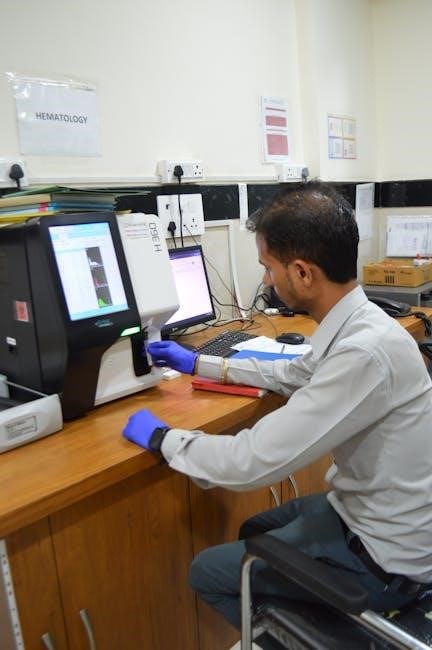
Specific Tests for Cranial Nerve Dysfunction
Specific tests like Weber, Rinne, and pupillary light reflex help diagnose nerve dysfunction. These assessments evaluate hearing, balance, and neurological responses, aiding in precise condition identification and monitoring.
6.1 Weber and Rinne Tests for Hearing
The Weber and Rinne tests are essential for assessing hearing and vestibulocochlear nerve function. The Weber test involves placing a vibrating tuning fork on the forehead to determine sound lateralization, while the Rinne test compares bone conduction to air conduction. Both tests help identify conductive or sensorineural hearing losses. Abnormal results may indicate nerve dysfunction, guiding further diagnostic steps and treatment plans for patients with suspected cranial nerve impairments.
6.2 Corneal Reflex Test
The corneal reflex test evaluates the integrity of the trigeminal (CN V) and facial (CN VII) nerves. It involves gently touching the cornea with a soft object, such as a cotton swab, to elicit a blink reflex. A normal response is bilateral blinking, indicating intact sensory and motor pathways. Absence or diminished reflex suggests a lesion in the trigeminal or facial nerve, aiding in the diagnosis of cranial nerve dysfunction and guiding further neurological assessment.
6.3 Pupillary Light Reflex Test
The pupillary light reflex test assesses the function of the oculomotor (CN III) and optic (CN II) nerves. A penlight is shone into each eye to observe pupil constriction. In a normal response, both pupils constrict when light is applied (direct response) and when the contralateral eye is stimulated (consensual response). Abnormal responses, such as dilated or non-reactive pupils, may indicate nerve damage or neurological conditions like CN III palsy or optic neuropathy, providing crucial diagnostic insights into cranial nerve function and brain health.
6.4 Swallowing and Gag Reflex Tests
The swallowing and gag reflex tests evaluate the function of the glossopharyngeal (CN IX) and vagus (CN X) nerves. The gag reflex is assessed by gently stimulating the uvula with a tongue depressor, observing bilateral elevation of the soft palate. For swallowing, the patient is asked to drink water and observe for difficulty or coughing. These tests help identify dysphagia or neurological impairments, such as brainstem lesions or nerve palsies, providing critical insights into cranial nerve integrity and swallowing mechanisms.
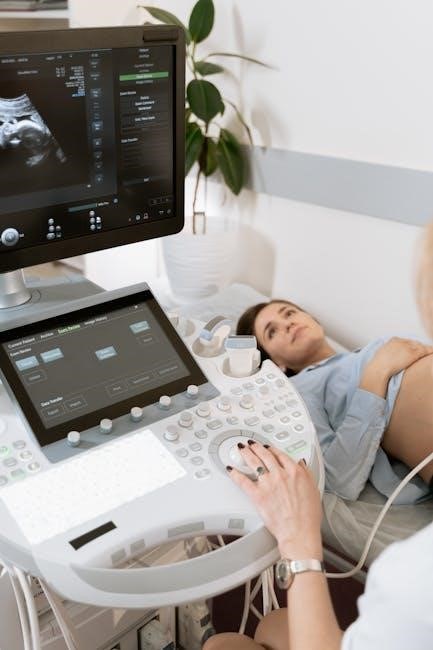
Clinical Significance of Cranial Nerve Tests
Cranial nerve tests are crucial for identifying neurological deficits, diagnosing conditions like brainstem lesions, and monitoring treatment progress, ensuring accurate patient care and management.
7.1 Diagnosing Neurological Conditions
Cranial nerve tests are pivotal in diagnosing neurological conditions by identifying specific nerve dysfunctions. Abnormalities in sensory or motor functions can indicate conditions like multiple sclerosis, strokes, or tumors. For instance, unilateral weaknesses in CN V, VII, and VIII may suggest a cerebellopontine angle lesion. These tests also help differentiate between central and peripheral nervous system disorders, guiding precise diagnoses and treatment plans. Early detection through cranial nerve assessments enables timely interventions, improving patient outcomes and quality of life.
7.2 Monitoring Progress in Treatment
Cranial nerve tests are crucial for monitoring neurological recovery and treatment efficacy. Regular assessments help track improvements in sensory or motor functions, such as regained strength or sensation. These tests enable clinicians to adjust treatment plans based on progress, ensuring optimal outcomes. By documenting changes over time, healthcare providers can better manage conditions like nerve injuries or post-stroke recovery, tailoring therapies to individual needs and enhancing patient care.
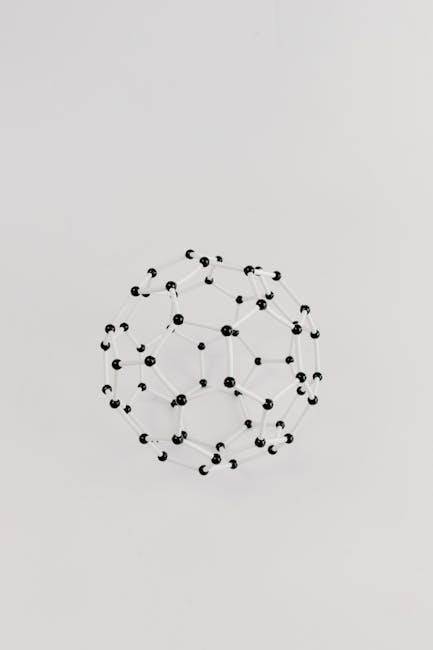
Common Lesions and Their Implications
Cranial nerve lesions can result from trauma, tumors, or infections, causing sensory or motor deficits. Unilateral lesions, like those in the cerebellopontine angle, often affect CN V, VII, and VIII, while bilateral lesions may indicate conditions like bulbar palsy, involving CN X, XI, and XII. Accurate localization is key for targeted treatment and management.
8.1 Unilateral vs. Bilateral Lesions
Unilateral lesions affect one side of the brain or nerves, often linked to localized damage like tumors or compression. Bilateral lesions impact both sides, suggesting systemic conditions. Unilateral CN V, VII, and VIII palsies may indicate cerebellopontine angle tumors, while bilateral CN X, XI, and XII weakness could signal bulbar palsy. Accurate differentiation aids in diagnosing conditions like brainstem strokes or degenerative diseases, guiding targeted therapies and improving patient outcomes by pinpointing the root cause of neurological deficits.
8.2 Localization of Lesions in the Brainstem
Lesions in the brainstem can be localized by assessing cranial nerve dysfunction. Damage to specific cranial nerves correlates with distinct brainstem regions. For example, impairment of CN VI (abducens nerve) suggests a lesion in the pons, while CN XII (hypoglossal nerve) dysfunction points to medullary involvement. Clinical examination techniques, such as testing eye movements, facial strength, and swallowing, help determine the exact location. Correlating findings with imaging like MRI enhances diagnostic accuracy, enabling targeted treatment and improving patient outcomes by precisely identifying the affected brainstem area.

Specialized Testing Techniques
Advanced methods like vestibular testing (e.g., turning test) and electrophysiological tests provide detailed assessments of cranial nerve function, complementing routine examinations for precise diagnostic accuracy.
9.1 Vestibular Testing (e.g., Turning Test)
Vestibular testing evaluates the function of the vestibulocochlear nerve (CN VIII), assessing balance and equilibrium. The turning test involves rotating the patient and observing eye movements for nystagmus. Caloric reflex testing uses water irrigation in the ear canal to stimulate vestibular responses. These tests help diagnose vestibular disorders, such as vertigo or vestibular neuritis, by measuring the brain’s ability to integrate sensory information. Accurate results are crucial for identifying impairments and guiding rehabilitation strategies to improve balance and coordination in patients with suspected vestibular dysfunction.
9.2 Electrophysiological Tests
Electrophysiological tests measure the electrical activity of cranial nerves, providing objective data on nerve function. Techniques like electromyography (EMG) and nerve conduction studies (NCS) are used to assess motor and sensory responses. These tests are particularly useful for evaluating conditions such as Bell’s palsy or trigeminal neuralgia. By analyzing electrical signals, healthcare professionals can identify nerve damage, monitor recovery, and guide treatment plans effectively. These advanced methods complement clinical examinations, offering detailed insights into cranial nerve health and function.

Troubleshooting Common Testing Challenges
Common challenges include patient anxiety, difficulty in cooperation, and interpreting abnormal results. Ensuring patient comfort and clear communication can enhance test accuracy and reliability significantly.
10.1 Patient Cooperation and Anxiety
Patient cooperation is crucial for accurate cranial nerve testing. Anxiety or stress can lead to poor responses, making results unreliable. Ensuring a calm environment and clear communication helps reduce anxiety. Explaining each test step-by-step and using simple language can build trust. Providing reassurance and addressing concerns minimizes fear of the unknown. Encouraging active participation and offering breaks when needed can enhance cooperation. Managing these factors is essential for obtaining reliable and valid test outcomes, ensuring accurate diagnosis and effective patient care.
10.2 Interpretation of Abnormal Results
Abnormal cranial nerve test results indicate potential neurological deficits or conditions. Unilateral weaknesses, diminished reflexes, or impaired sensory responses may suggest localized nerve damage or broader brainstem issues. Patterns like gaze palsy or dysphagia can point to specific nerve involvement. Correlating findings with clinical history and imaging aids in accurate diagnosis. Referring to normative data ensures reliable interpretation. Further investigations, such as MRI or EMG, may be needed to confirm underlying pathology. Accurate interpretation is vital for timely and effective patient management and treatment planning.
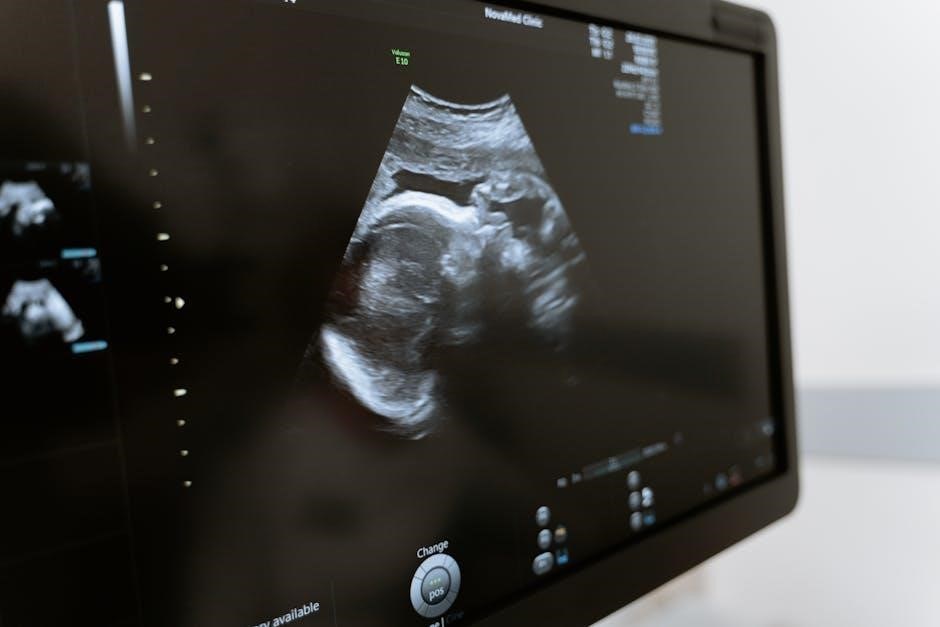
Documentation and Reporting
Accurate documentation of cranial nerve test results is crucial, utilizing standardized formats for clarity. Results are integrated into patient records, aiding in diagnosis and treatment planning effectively.
11.1 Standardized Reporting Formats
Standardized reporting formats ensure consistency in documenting cranial nerve test results. These formats typically include charts or checklists for each nerve, detailing normal and abnormal findings. They often incorporate clinical observations, such as muscle strength, sensory perception, and reflex responses. Using standardized symbols and abbreviations enhances clarity and efficiency. These formats also allow for easy comparison of results over time, aiding in monitoring progression or improvement. Consistent reporting supports effective communication among healthcare providers and ensures comprehensive patient care.
11.2 Incorporating Test Results into Patient Records
Incorporating cranial nerve test results into patient records is essential for accurate documentation and continuity of care. Results are recorded in standardized formats within electronic health records or physical files, ensuring accessibility for all healthcare providers; Narrative descriptions, coded entries, or graphical representations are used for clarity and consistency. This comprehensive documentation aids in tracking neurological changes over time, informing treatment decisions, and enhancing overall patient management and legal record-keeping.
Cranial nerve tests are vital for diagnosing neurological conditions and monitoring treatment progress. They provide essential insights into brain function, ensuring accurate patient care and guiding future advancements in neurology.
12.1 Summary of Key Concepts
Cranial nerve tests are essential for assessing sensory and motor functions, enabling early detection of neurological deficits. These tests evaluate vision, hearing, smell, taste, and muscle movements, providing critical insights into brain function. Proper techniques, such as smell identification and hearing assessments, ensure accurate results. Regular testing aids in diagnosing conditions like nerve palsies and monitoring treatment progress. By understanding cranial nerve anatomy and function, healthcare professionals can deliver targeted, effective care, improving patient outcomes and advancing neurological practice.
12.2 Future Directions in Cranial Nerve Testing
Future advancements in cranial nerve testing may involve enhanced integration of telemedicine and AI for remote assessments, improving accessibility. Electrophysiological tests could become more refined, offering deeper insights into nerve function. Wearable devices might enable continuous monitoring of cranial nerve activity, aiding in early detection of abnormalities. Additionally, non-invasive imaging techniques could complement traditional tests, providing a more comprehensive evaluation. These innovations aim to enhance diagnostic accuracy, simplify testing processes, and improve patient outcomes in neurological care.


